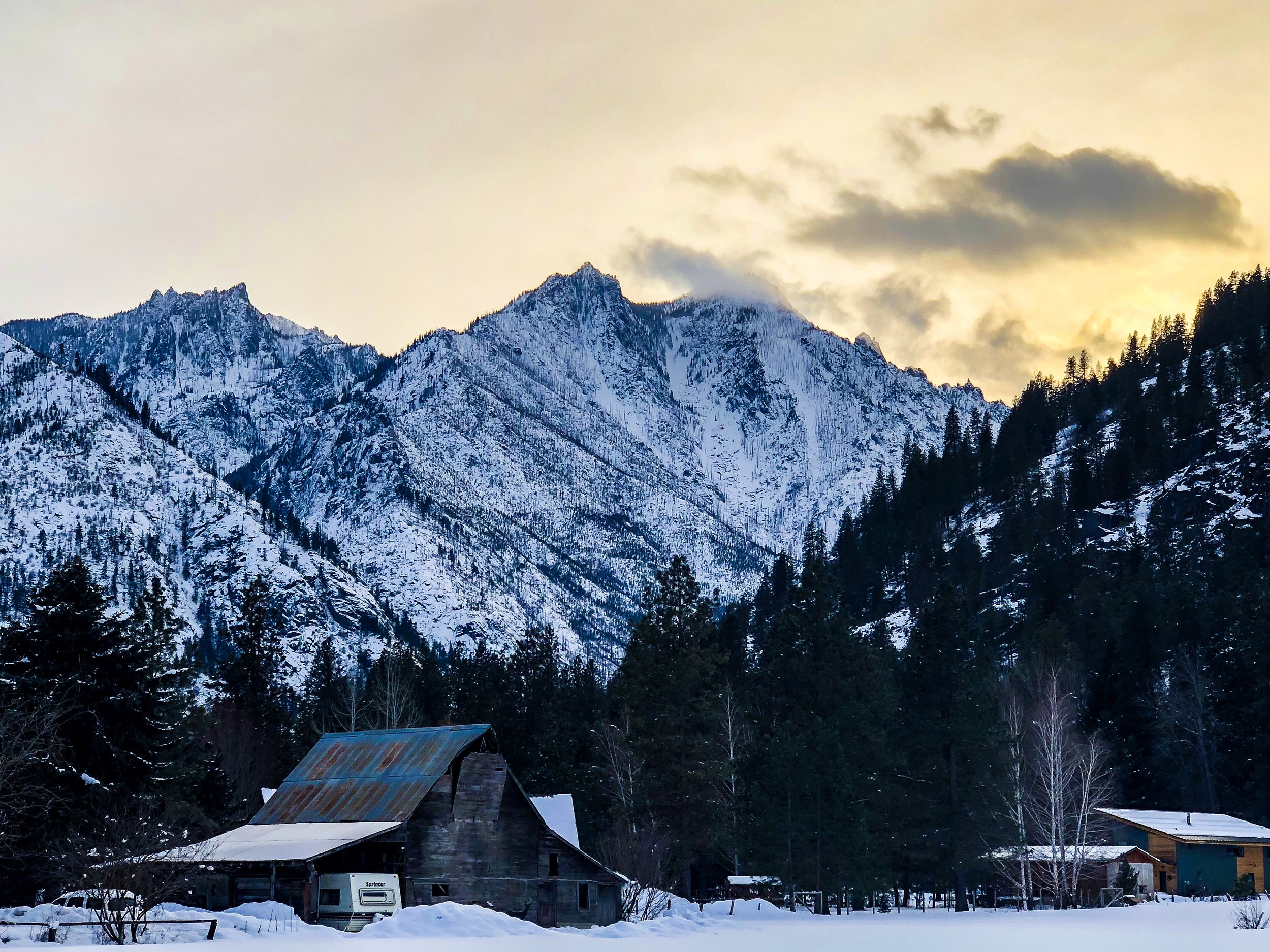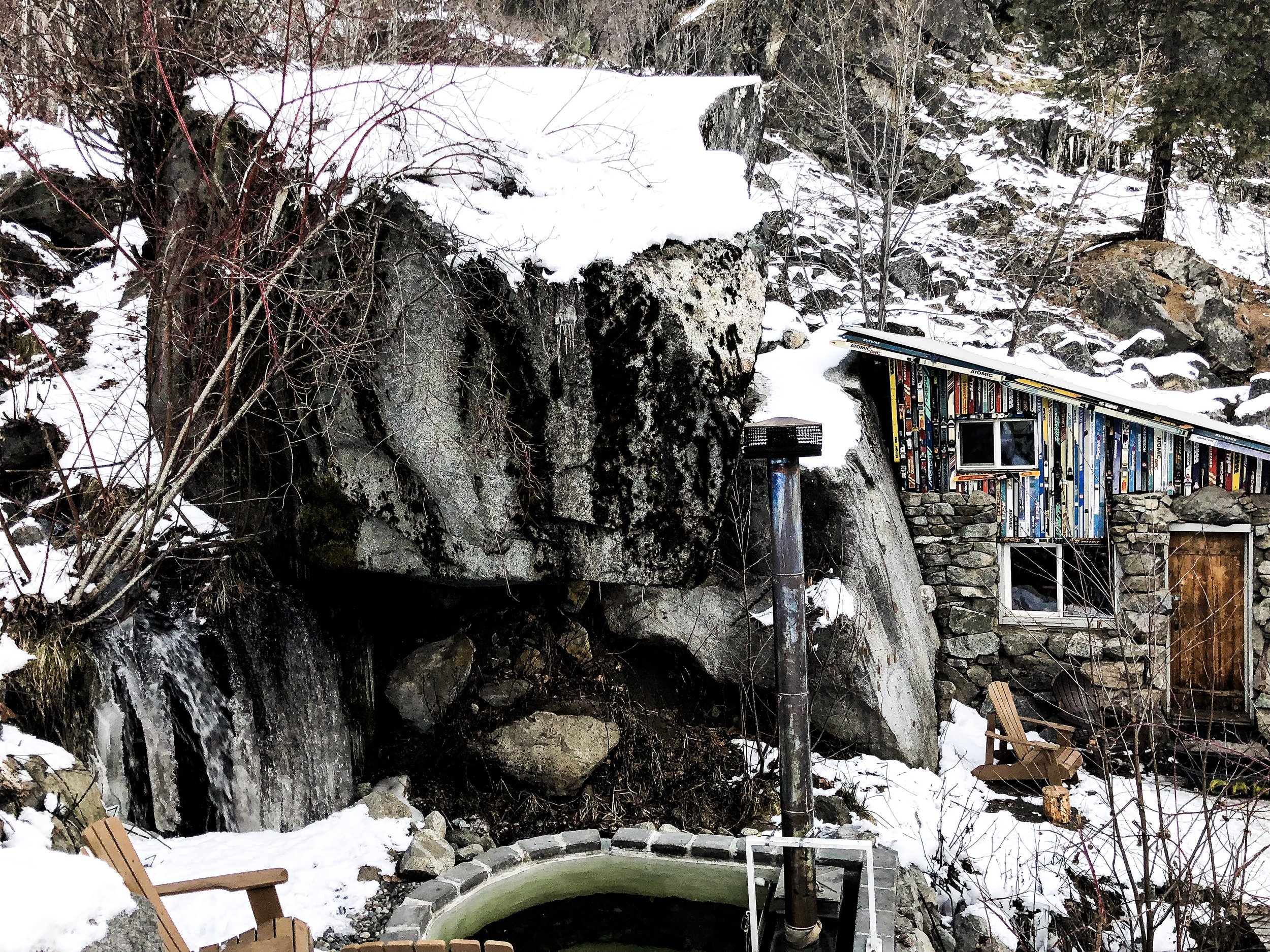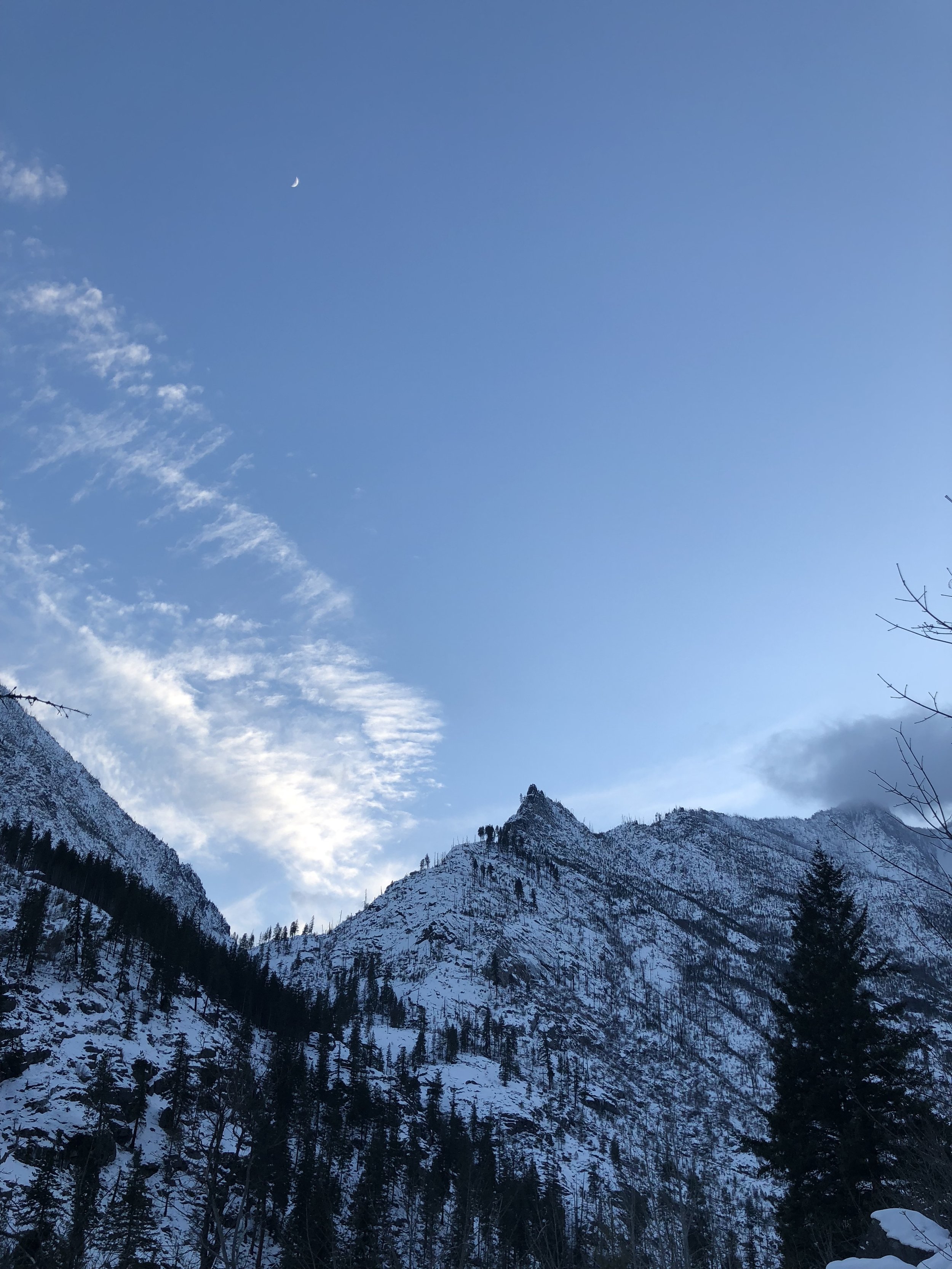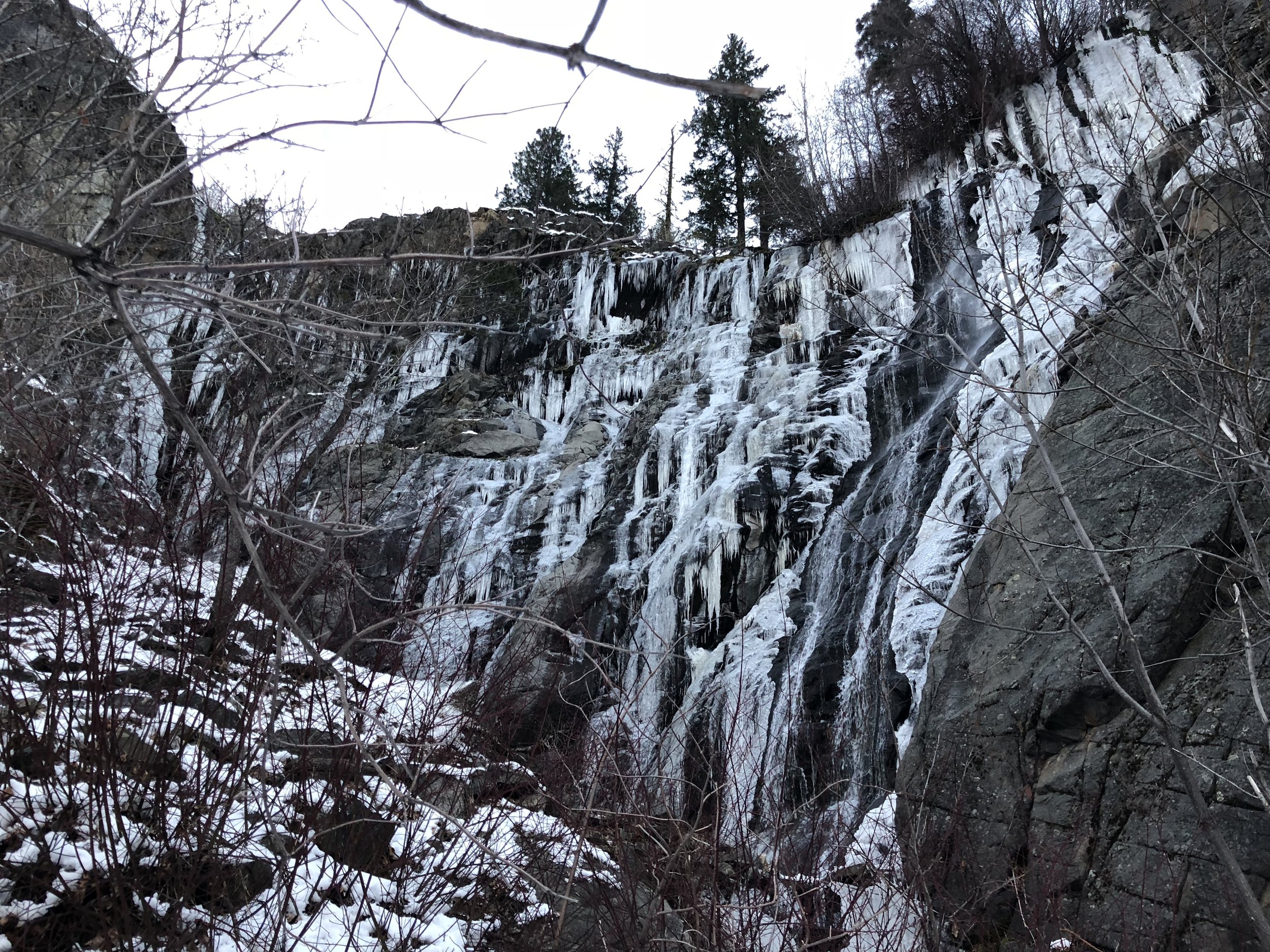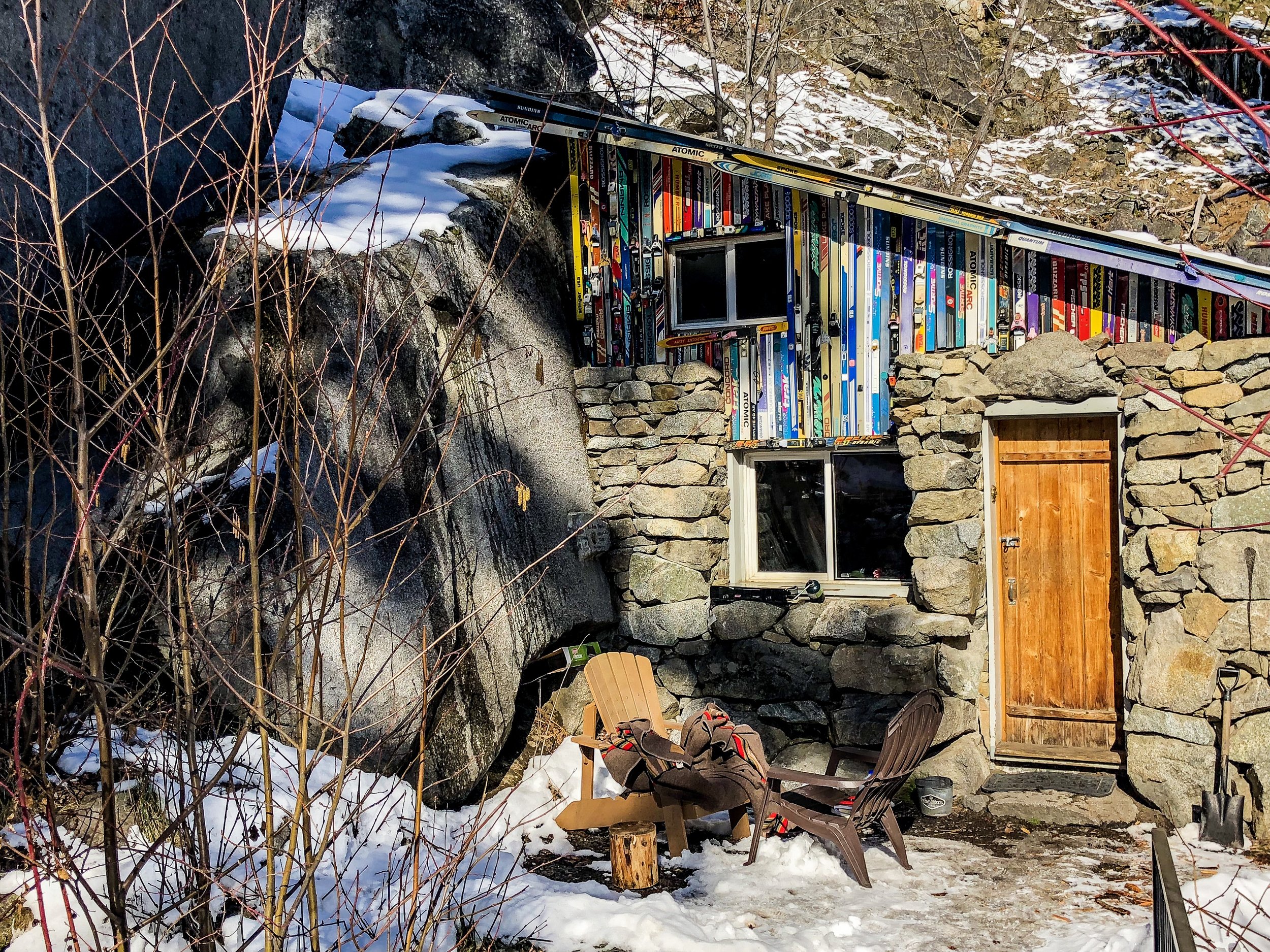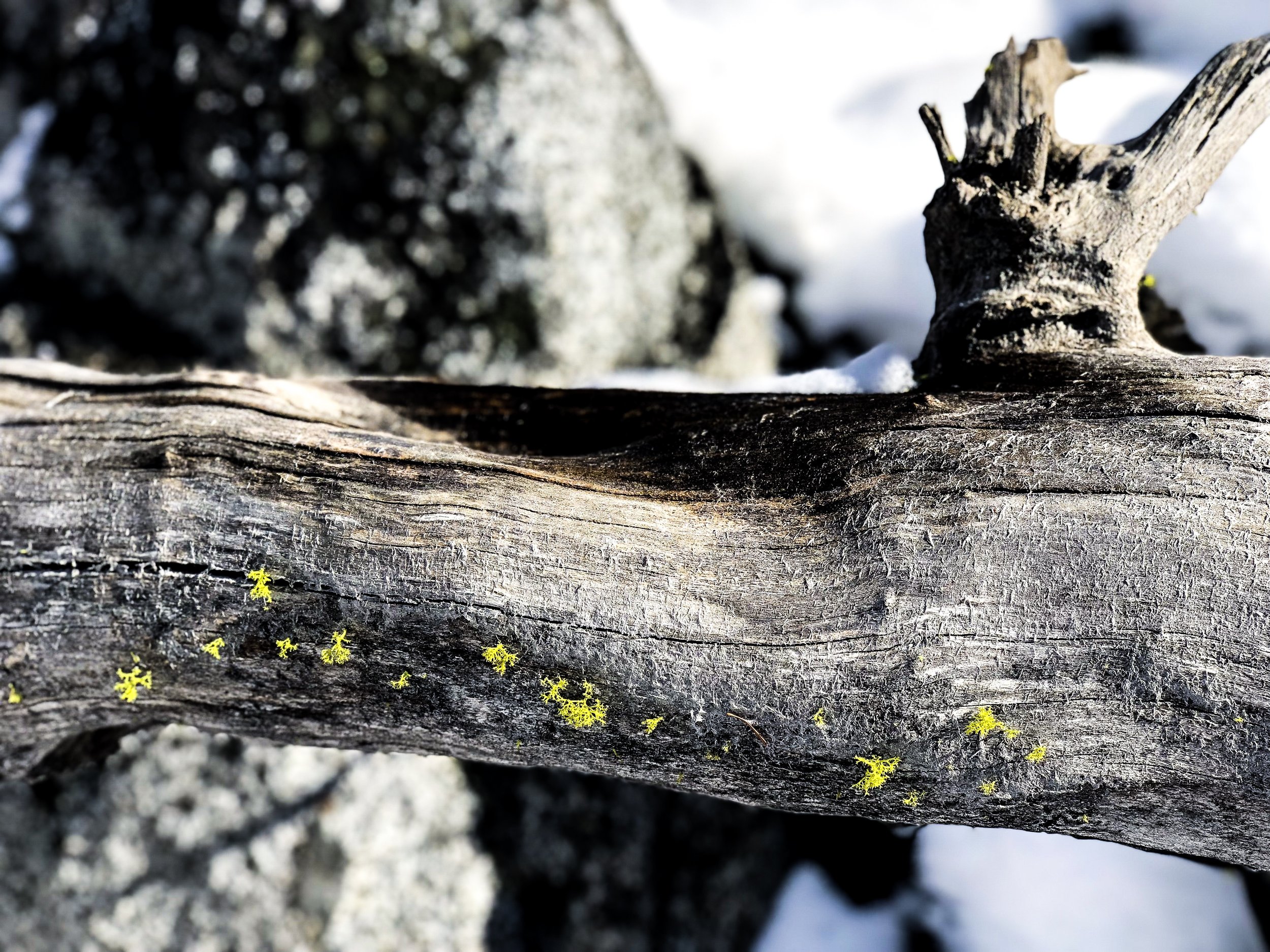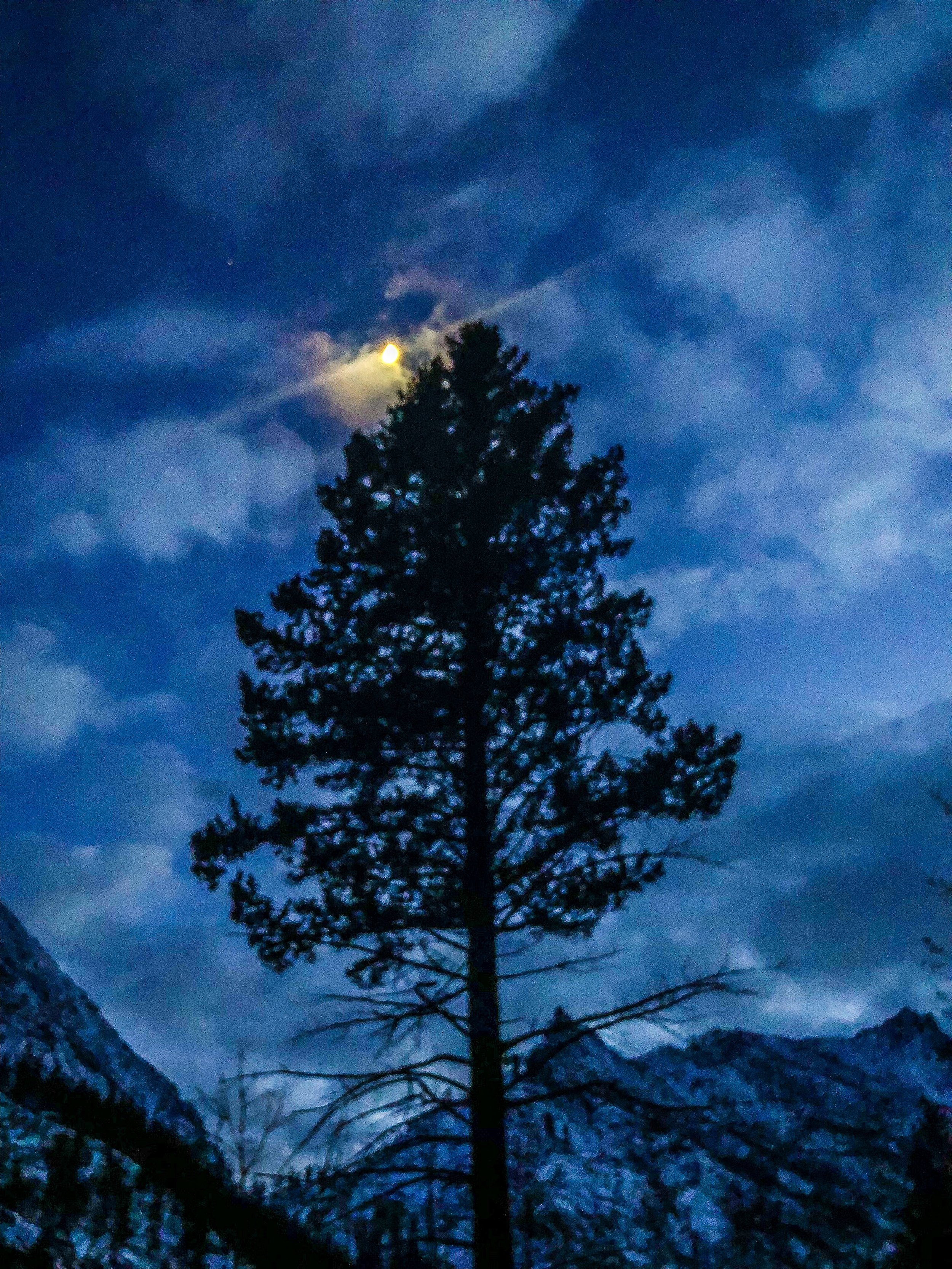Winter Rewilding Retreat-The Enchantments
/In February I went away for my personal Winter Rewilding Retreat up in the North Cascades. Here, in a cave-turned-cabin, I engaged prayers and practices that reconnected me to the deep and sacred symbolisms associated with Winter, North and Air, locating them in the bioregion of mountains and high places. From this place I sought the mythopoetic wisdom of the sage, the elder, the crone. Temperatures dipped into single digits so I kept the cave’s wood burning stove burning, not so unlike the fires around which wise ones gathered to tell their stories of what the wild had taught them.
Rewilding is an ecological term that defines the process of bringing a habitat back into flourishing wholeness. It is a restorative philosophy that reintroduces native forests, flora and fauna to denuded landscapes with the hope for a flourishing ecosystem that is regenerative.
Applied to our interior lives, our “soulscapes,” rewilding then becomes a practice of integrating our souls back into the soil of our bioregion and the regenerative spirituality of nature. This is a coming to know the sum of an area's forces, what poet and environmental activist Gary Snyder calls the "spirit of a place." This is a developing of a bioregional awareness, allowing a place to instruct and inform us in specific ways. While there will always be archetypal wisdom within the universal qualities of a geography, the particularities of a place is critical. This is how we become of a place once again. This is a practice, a process, that remembers ourselves back into belonging here and into the sacred wisdom within the rhythms of the natural world.
Each Rewilding Retreat focuses in on the sacred nature symbolism associated with the particular season, the corresponding cardinal direction and element, and the psycho-spiritual development that aligns as well. Within this collection of meaning, I can find divine inspiration in particular places.
This winter I went north to the Northern Cascades, mountains that are dear to my heart and heritage. My maternal great-great grandparents settled the town of Index, Washington. This mountainous corridor has headlands that bear the names of my forebears, so driving through them, and having them as my vistas, is like being amongst my ancestors. And while there are certainly favorite and seasoned stories from this side of my family, I am increasingly grateful for the perspectives of these peaks; their vantage point offers timeless truths that transcend the narrow views of pioneers of past days. I feel the mountains speaking their yet older names, and offering stories that aren't bound in leathered journals, but instead are writ in stone, pine, and headwater. And so I journeyed to a cave-like cabin at the feet of The Enchantments. In a small lean-to built into the side of an ancient pile of boulders, I engaged my anchorite-self, praying, reading, and writing in response to the wind, this high place, and the fires that kept this alpine hermitage warm. I felt a renewed sense of kinship with the great 11th century visionary and mystic Hildegard of Bingen. Legends of her life claim that her particular anchorage was cut into a hillside. Living within and tending to the earth produced a heightened sensorial attunement to and a unique understanding of the other-than-human world. This embodied experience of the interrelatedness of the whole of creation gave her insight into nature’s immanent creativity and rhythms.
These rhythms surrounded me in my alpine hut. Just outside of my worn wooden door cascaded a crystal clear, potable, water fall, undoubtedly part of the headwaters of Icicle Creek, the Skykomish and Snohomish Rivers, and the many tributaries and lakes in the Cascade lowlands. This deluge was amplified by the percussive booms of falling ice; the upper falls would ice over completely in the almost sub-zero night temperatures, and as soon as the sun glanced on the face of the falls, cracks would course through the coverage and descend upon the boulders just above the cabin. I climbed up there one morning after the sun had fully risen and was in awe of this steady cracking and breaking. Several times I had to jump further back and away from the emerging water fall as the ice fell away from its nocturnal covering to avoid getting hit by several feet of broken ice. These sounds reminded me of how very alive these high places are. For here is where all life begins; where water begins its journey in both form and function. Here is where it begins its journey to provide life to generations to come.
“As long as I live, I'll hear waterfalls and birds and winds sing. I'll interpret the rocks, learn the language of flood, storm, and the avalanche. I'll acquaint myself with the glaciers and wild gardens, and get as near the heart of the world as I can.”
-John Muir
The heart of the world, the animus mundi, comes through with revelatory particularity depending on where we are. And where we are is constructed of various elements and associations within the natural world. In any given location, the spirit of a place is revealing herself through the given season, our physical cardinal orientation (Are you facing North? Are you facing South? Can you attune to the differences?), the elements, and solar and lunar phases. This collection of associations all play together in profound and powerful ways when they are located in a geographic location that marries these correspondences. And so, the Rewilding Wheel would spin these various nature symbols and land them, plant them, root them in a place where quarter long engagement can be practiced to develop a stronger sense of locatedness. The Spanish philosopher Ortega y Gasset is often quoted as saying, “Tell me the landscape in which you live and I will tell you who you are.” In today's amnesiac society this telling is an increasingly lost art form. People no longer know where they are as technological advancements and modern careers would say that in a global, social-media market place, being from one place doesn't matter. There are many contributing factors and outcomes related to this broad stroke generalization. What I am learning through my own rewilding year is that what is also lost is a particular understanding of God.
When we live transcendentally, so lives our understanding of God, and we lose sight of the sacramentality of our local soil.
What Annie Dillard called "the scandal of particularity," John Duns Scotus termed "thisness" (haecceity). This thisness understands that God creates and resides within particularity. There is something particular in how Divine Presence is experienced and manifested in the Pacific Northwest, as in any other location on earth. Our important work is to attune to our places and immerse ourselves in a particular way of knowing that honors how the subterranean stream of God has percolated through and become particularized in a place. This is how we connect to the animus mundi, the spirit of a place.
I spent a warm and cozy late afternoon, reading, praying, and writing. Ironically, during this retreat (and most of all of February) I was dealing with a prolonged case of laryngitis. I literally couldn't speak. This physical ailment added a depth of meaning to this rewilding retreat as the themes within the Winter season include that of silence, the kind of quiet that comes from a life well lived and a wisdom that now chooses words with careful selection. Within this quadrant of the Rewilding Wheel, I look at the characteristics of the crone (a female elder whose name has been abused over the course of history) and how her wisdom is crystalized to that of a seed. So while this is the season of dormancy and stillness, the spring-time rhythm of seed-growth echoes backwards to me, even while I sit quiet in a stone enclosure. I invited the natural world to be my voice and prophetic prose to be my prayers. As the sound of a waterfall sings right outside the window, Brother Muir is a perfect companion for this mountain retreat:
“Nature as a poet...becomes more and more visible the farther and higher we go; for the mountains are fountains—beginning places, however related to sources beyond mortal ken.”
Everything about this ancient alpine place speaks with wisdom: the craggy peaks, the granite boulders, the ice-ensconced falls, the celestial orbs. There is a hot tub that is filled and fed by the fall's water; to heat this tub one must build a small fire within an immersed metal box and tend to its flames. Slowly and steadily the water is heated to body-nourishing temperatures. Every action and chore around this cabin carries with it deep meaning and metaphor. Even the fire-tending for the hot tub speaks to me and asks me to meditate on that which I keep burning within me to maintain warmth, health, and wellness. Slowly, I am beginning to read the sacred text that is creation. I feel like my faith has grown feathers and my hope, horns.
These Relwilding Retreats are a way to begin the practice of this deep landscape-listening, this learning from the sacred thrumming that exists within our particular bioregion.
This is the practice of seeking out the story-soaked soil of our homescapes so that we not only begin to truly know where we are, but of equal importance, who we are.
These sacred stories will evade us as long as we ignore where we are, as long as we disregard our bioregion and its histories. A Crow elder has said: “You know, I think if people stay somewhere long enough—even white people—the spirits will begin to speak to them. Its the power of the spirits coming up from the land. The spirits and the old powers aren’t lost, they just need people to be around long enough and the spirits will begin to influence them.” When we remember and return to the land that fosters us and informs our faith, we are practicing a form of spiritual rewilding. This rewilding of our soul's terrain invites an attunement to the subtleties of the the sacred that exist within our particular places.







